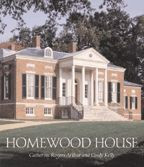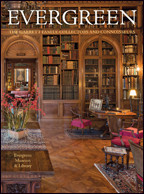Winner of a 2005 Heritage Book Award given by the Maryland Historical Trust.
Baltimore's Homewood was a wedding gift from Charles Carroll, a signer of the Declaration of Independence, to his son Charles Jr. and his bride, Harriet Chew Carroll. Located on 130 acres of rolling meadow and forest, it afforded picturesque view to the harbor. The couple built a "full and genteel establishment," a grand yet intimate summer house that exemplifies the work of the most skilled Baltimore craftsmen of the Federal period. Construction began in 1801 and incorporated a classical five-part Palladian plan, with...
Winner of a 2005 Heritage Book Award given by the Maryland Historical Trust.
Baltimore's Homewood was a wedding gift from Charles Carroll, a signer of the Declaration of Independence, to his son Charles Jr. and his bride, Harriet Chew Carroll. Located on 130 acres of rolling meadow and forest, it afforded picturesque view to the harbor. The couple built a "full and genteel establishment," a grand yet intimate summer house that exemplifies the work of the most skilled Baltimore craftsmen of the Federal period. Construction began in 1801 and incorporated a classical five-part Palladian plan, with two hyphens flanking the main block and connecting it to two wings, or dependencies. Spending far more than his father had anticipated, Charles Jr. used only the finest materials then available and included extraordinary architectural details throughout the house. Homewood endures today as one of the finest examples of Federal-period domestic architecture in the United States.
Sold by the Carroll family in 1838, the house and grounds eventually became the Homewood campus of the Johns Hopkins University. In 1971, Homewood received National Historic Landmark status, and five years later—through the generosity of Robert G. Merrick, an alumnus and university patron who developed a love for Homewood as a student in the 1920s—Johns Hopkins University began a major restoration effort. Today, open to the public as a museum, the house reflects the height of early-nineteenth-century style and the tastes of the Carroll family.
In a lavishly illustrated yet scholarly study of this exquisite American residence, Catherine Rogers Arthur and Cindy Kelly explore Homewood's history, detailing its construction, reliving the Carroll family's experiences here, and recounting the expert restoration that preserves this home for generations to come. The book includes more than one hundred full-color photographs of the house's graceful exterior, its elegant rooms and furnishings, and the many architectural details that have made Homewood so beloved.






